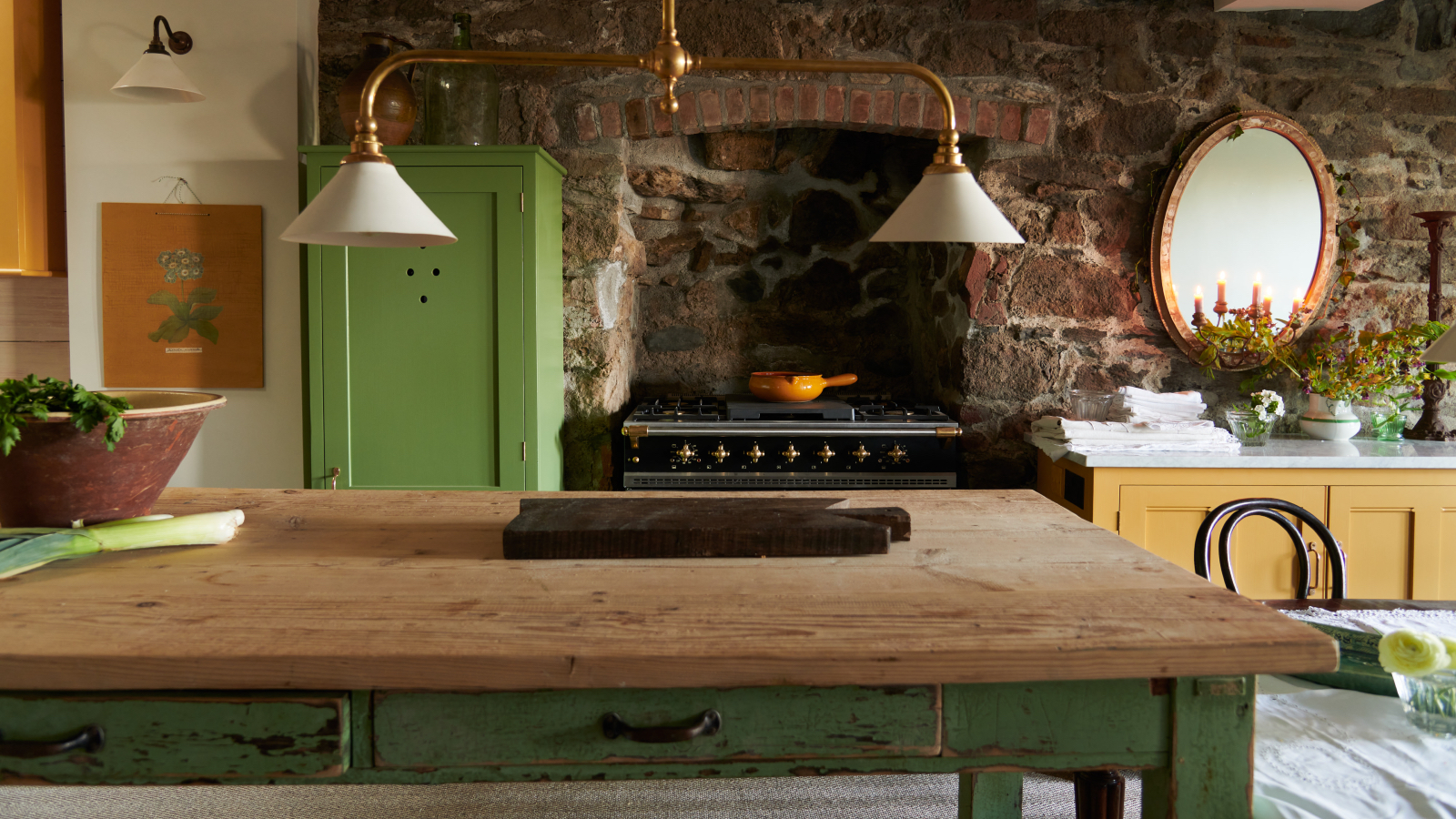You can't afford to ignore these 6 major structural issues with your home – here's how to spot the signs
Discover the signs that can indicate structural problems with your home that you must deal with


Your home is likely to be your most valuable asset and ensuring it remains sound is essential. There are structural issues you can’t afford to ignore and the sooner they’re spotted, the better.
Ensuring a home’s structure is in good order matters if you’re a home renovator, but it’s equally vital for any owner in order to maintain the building’s integrity. And while some things can look serious when they’re actually cosmetic, others can be far more significant.
To help you keep your home in great shape we asked the experts to identify the structural problems that it’s crucial to deal with along with the early signs you might see, and this is what they told us.
6 structural issues you must not ignore
Maintaining your home includes looking out for the signs of structural issues. Detect potential problems early and you can get them checked by an appropriate professional, deal with them as necessary, and save money and heartache in the long run.
Be aware that not every sign included below does indicate a structural issue is the cause on every occasion – sometimes things are less serious. However, ignoring them is never the right option, so these are the symptoms to look out for.
1. Missing roof shingles, leaks, and sags

The roof of a home can show the signs of structural issues, so look up for an early alert – new roof costs are substantial.
‘Homeowners should look for missing, loose, or damaged shingles; after a storm, they should check the attic for leaks,’ says Daniel Cabrera, owner and founder of Sell My House Fast SA TX. ‘Many times this is easily overlooked until the damage is done, yet it can be severe if water penetrates the home and over time can lead to mold problems.’
Another way you might be alerted to roof problems? ‘They may present as a drip-drip-drip that you see in your can lights or that comes down off the ceiling fan,’ says Josh Rudin, Owner of ASAP Restoration. ‘If this is the case, there is almost certainly a larger leak in the roof that you simply can’t see, and it is a big indicator that there is additional damage that you can’t see as well.
‘Addressing roof problems usually isn’t a DIY task because simply finding where the water is entering the home can be a challenge,’ Josh adds. ‘Expert roofers can see these defects and address them in a single shot rather than troubleshooting every time it rains as a DIY approach.’
Check out the roofline, too. ‘Uneven or sagging rooflines tend to be related to roof construction or materials, and these issues can best be identified with a roof inspection,’ says Michael Moore, home inspector and franchise owner of WIN Home Inspection in Jupiter, Florida.
Be sure to keep the roof in good shape over the long term by removing moss and cleaning gutters.
2. Cracks in walls or floors
Never ignore cracks in interior or exterior walls or floors, as they could indicate a foundation problem.
‘Some of the most common structural issues are cracks in walls and foundations, explains Michael Moore. ’If cracks are found, it’s best to have them evaluated by a professional to help determine the cause of the cracks and what treatment, if any, may be needed.’
Be aware of the appearance. ‘Thin cracks in the stucco that don’t follow any particular direction or at transitions to other materials tend to be settlement or curing cracks,’ he explains. ‘The same logic applies to cracks in concrete slabs – as long as there isn’t a change in elevation, they don’t widen or are not of significant depth. These types of cracks can usually be sealed and monitored for further development.
‘However, if cracks in wall stucco are stair stepped or slab cracks widen, have elevation change or are deep, then a structural issue could exist.’
3. Sticking doors and windows

Doors and windows that stick are another issue can seem like a minor annoyance, but it’s a problem you shouldn’t ignore.
‘If you find that windows and doors are becoming increasingly more difficult to open or close, then you may have a structural concern,’ advises Michael Moore. ‘This could be linked to several areas of your home including the foundation or even the structure itself. But sometimes poor installation is the cause, and the fix could be a simple adjustment. Either way, it’s best to have a qualified professional inspect the home’s structure.’
Find out the issue’s not structural? Follow the pros’ advice to fix a door that sticks.
4. Uneven floors or walls
When floors are uneven or walls, you might think it’s not a big deal – but they should prompt you to take action.
‘Floors that aren’t level or walls that aren’t plumb (not vertical) are typically a sign of structural concern and could be linked to the foundation or other construction defects,’ says Michael Moore. ‘If the floor feels like it is slanted or even sagging, it’s best to have this inspected by a qualified professional.’
5. Stains and mold
Stains on interior surfaces and the growth of mold are not signs you should overlook.
‘Unrelenting moisture can weaken the very bones of a structure through wood rot and mold growth,’ says Daniel Cabrera. ‘Such leaks and dampness issues should be fixed immediately. Warning signs to look out for include a musty smell, visible mold, and staining on walls or ceilings.’
Don’t ignore the fact that mold can cause health issues as well and adopt daily habits for a mold-free home.
6. Mud tubes

Spotted mud tubes around the foundation of your home? They can be a sign that you need to get rid of termites, which can cause significant problems. Call in a professional if you think that’s what you’ve seen because these destructive intruders can otherwise go undetected for a while.
‘Termites can do a huge amount of damage without people ever even seeing the chaos that they can cause,’ explains Josh Rudin. ‘Termites can destroy the structural components of the home by chewing away the wood and weakening the edifice. This may not affect the people living inside, but it might also completely collapse without warning as well.
‘The only way to ensure that the home is free of these menaces once they have been detected is to kill all existing colonies and prevent any future ones from taking hold,’ he continues. ‘Once this is done, if there are structural elements that need to be addressed or even replaced, then now would be the time to solve this issue.’
As well as dealing with structural issues to keep your house sound, you should be aware of your responsibility when selling. ‘In most US states, you must tell potential buyers about any known problems in writing,’ advises Matthew Clark, attorney, The Clark Law Office. ‘Typically, you must list all defects in a seller’s disclosure statement. This includes issues like leaks, cracks, and water damage. Each state has its own rules, so check yours before selling.’
Sign up to the Homes & Gardens newsletter
Design expertise in your inbox – from inspiring decorating ideas and beautiful celebrity homes to practical gardening advice and shopping round-ups.

Sarah is a freelance journalist and editor. Previously executive editor of Ideal Home, she’s specialized in interiors, property and gardens for over 20 years, and covers interior design, house design, gardens, and cleaning and organizing a home for Homes & Gardens. She’s written for websites, including Houzz, Channel 4’s flagship website, 4Homes, and Future’s T3; national newspapers, including The Guardian; and magazines including Future’s Country Homes & Interiors, Homebuilding & Renovating, Period Living, and Style at Home, as well as House Beautiful, Good Homes, Grand Designs, Homes & Antiques, LandLove and The English Home among others. It’s no big surprise that she likes to put what she writes about into practice, and is a serial house renovator.
-
 9 things you can clean with glycerin – this cheap and natural cleaner is perfect for indoor and outdoor use
9 things you can clean with glycerin – this cheap and natural cleaner is perfect for indoor and outdoor useFrom patio furniture to silverware, this hydrating and gentle cleaning agent will work miracles
By Ciéra Cree Published
-
 Martha Stewart's houses – inside her most iconic properties, from Cantitoe Corners to Turkey Hill
Martha Stewart's houses – inside her most iconic properties, from Cantitoe Corners to Turkey HillThe lifestyle guru built her legacy around her homes, some of which are the most recognized homes in modern American history – we explore her portfolio
By Megan Slack Published